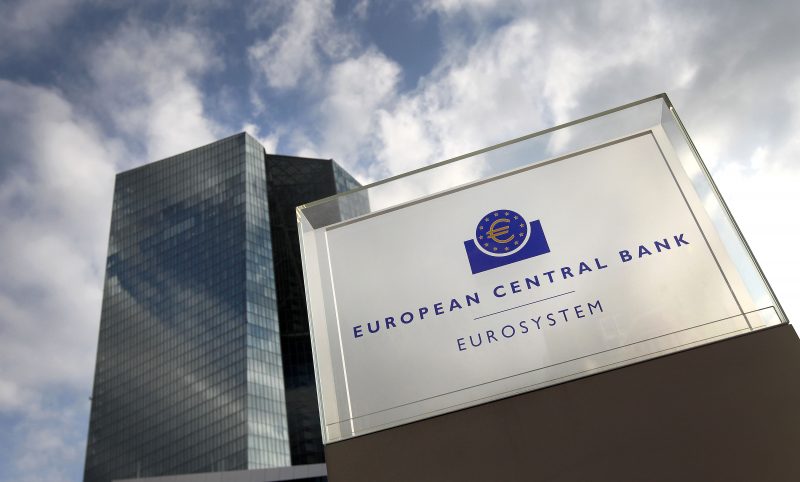Spotlight on ECB over fears for eurozone growth, inflation
Economists say downbeat business confidence surveys and subdued inflation expectations put pressure on the European Central Bank (ECB) to help economic growth (Daniel ROLAND)
Frankfurt am Main (AFP) – The European Central Bank (ECB) is expected to detail plans Thursday for another round of loans to banks, while growth and inflation worries plaguing the eurozone could prompt further interventions.
After a weak patch in late 2018, economic expansion in the eurozone bloc bounced back between January and March, gaining 0.4 percent from the last quarter of 2018.
That should normally be good news, with growth pushing inflation towards the central bank’s price stability target.
However, economists say business confidence surveys, shaken by US-led trade wars and subdued market expectations for price growth, put pressure on the ECB to do more at its meeting in the Lithuanian capital Vilnius.
On top of threats from overseas, worries closer to home include a looming budget confrontation between Brussels and Rome, elections in Greece and a possible no-deal Brexit following the departure of British Prime Minister Theresa May.
“With substantial risks to the economic outlook and markets… sending inflation expectations scarily low, bold monetary action is needed,” said Erik Nielsen, chief economist at Italian lender UniCredit.
So-called “five-year/five-year” swaps — which reflect how financial players judge the pace of price growth between five and 10 years from now — currently almost match their mid-2016 level of 1.25 percent, their lowest ebb under ECB president Mario Draghi’s eight-year tenure.
That is far from the central bank’s inflation goal of just below 2.0 percent.
“In the past, the announcements of new ECB stimulus often coincide with sharp drops in market-based inflation expectations,” ING bank economist Carsten Brzeski said.
However, after years of low rates and other unprecedented steps to boost lending and growth, “there is not a lot it can do to really kick-start growth if needed,” he added.
– Bank bonanza –
The ECB said in March that it would repeat from September a scheme offering banks low-interest loans in exchange for them lending on the cash to the wider economy.
After the policymakers’ last gathering in April, Draghi said it was “too early to decide” on the exact conditions for the third round of the so-called Targeted Long-Term Refinancing Operations (TLTROs).
But any details it offers this week could hint at how it plans to respond to the latest challenges.
Policymakers must strike a balance, avoiding making banks — especially those in Italy — dependent on the cheap cash, while making the injection significant enough to increase lending, in turn boosting growth and inflation.
The central bank could also push the first date for a possible interest rate hike in its “forward guidance” policy statements further into the future than the current language pointing to early 2020.
– ‘Toolbox’ to hand –
Draghi should reiterate his April stance that the bank stands ready to open its “toolbox” that contained “plenty of instruments” to respond to any downturn.
Another option the ECB is “looking at” is a so-called “tiering” scheme that would exempt some banks’ deposits in Frankfurt from a costly negative interest rate of -0.4 percent.
The charge, mostly paid by German and French banks, costs lenders around 7.5 billion euros ($8.4 billion) per year.
Less likely — because fraught with political risk — would be a relaunch of its “quantitative easing” (QE) net purchases of government and corporate bonds, which between March 2015 and December 2018 amounted to 2.6 trillion euros.
Observers will also pore over the latest quarterly economic forecasts from the ECB staff, who are expected to present a cautious take on how growth, inflation and other indicators will develop in the coming years.
With June’s meeting the first for former Central Bank of Ireland head Philip Lane in his new role as chief economist, any changes to the ECB’s forecasts over the coming quarters are sure to be closely scrutinised.
Disclaimer: Validity of the above story is for 7 Days from original date of publishing. Source: AFP.


